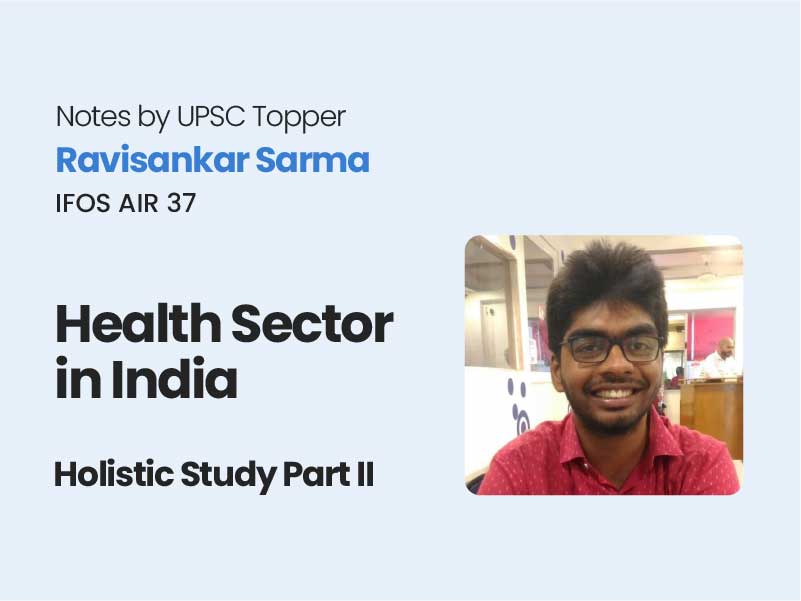Companion@360 → 7 Month programme to sharpen your writing skills → REGISTER NOW

Critical Response to the Bill
- Unitary Character: The centre governments right to nominate members also affects the federal character of the regulatory institution as it subverts powers of state medical councils
- Representativeness of Doctors: The IMA has criticized the bill for doctors may not find nomination in the NMC. This reduces the legitimacy and expertise of the body for medical education regulation
- Commercialization of Medical Education: The NMC bill raises concerns of commercialization of medical education as private medical colleges have been provided freedom to fix fees for 60% of the seats
- Enforcing Medical Singularity: Bridge courses endanger the medical variety of Indian medicine being subsumed by the homogeneous allopathy. This deprives consumer of the diverse medical choices available to them.
- Coordination between professions lacking: The NMC does not provide for an inter-personnel education platform that connects medical, nursing and allied health professionals’ education that would reduce doctor dependence particularly in PHCs.
- Overlapping Jurisdiction: NMC has been asked to regulate research and prepare roadmaps for health infrastructure. This puts its functioning in overlapping domains with ICMR and central and state ministries respectively
Dealing with Safety and Standards – Drug Regulatory Authority
- Ensure safety and quality standards of drugs
- Implement legislations and regulation on pharmaceuticals in India
Central Drug Standard Control Organisation
- Standardise and regulate medical devices
Dealing with Affordability – National Pharmaceutical Pricing Authority
- National List of Essential Medicines – upper limit of drugs and assistive devices fixed
- Drugs under Non-scheduled list can be hiked 10% yearly maximum
Why NPPA?
- Gain access to affordable medicines – highest out of pocket expenditure- Heightens importance in lieu of the low coverage of health insurance
- Nexus between doctors and pharmaceutical companies leaving citizens at the wrong end of an exploitative system
Consequences of Price Control
- Discourages Research and Development: Frequent capping of price for drugs discourages research and development as it may not prove to be economically viable.
- Discourage production of APIs: Placing the ceiling too low on companies can discourage the production of active pharmaceutical ingredients
- Excessive ceiling on Furoped reduced its availability to 40% and later NPPA was forced to increase the ceiling
Way Forward
Government procurement and distribution through Gen Oushadi shops can help prevent the need for market intervention thus ensuring affordability and viability of R&D at the same time.
Read Also National Register of Citizens
Issues with Drugs
- Pharma-Doctor Nexus: The patient is a victim of nexus between pharma companies and doctors that leads them to demand high cost drugs
- Quality and Safety of Drugs: Many of the doctors are sceptical about the quality and safety of generic drugs that are sold in the market. They invariably tend to prescribe costly branded alternatives
- Lack of Awareness among patients: The patients are not aware of generic medicines and gullibly accept prescriptions without question
- IPR policy: India’s IPR policy is not rewarding for research in drug production. Thus, pharma companies fail to innovate to find cost effective drug solutions for several diseases
What can be done?
- Quality Control: A robust quality control regime can ensure safety and quality of drugs. Only such a system can pave way for mandatory prescription of branded drugs in the country. Recently, the bio-equivalency test for generics was made mandatory ensuring the generic drugs retain the standard of the original
- Quality Testing Facilities: Drug regulation needs to be ensured at every stage: testing during production, post market monitoring, drug alert and drug recall after usages. A skilled human resource base across pharma industries and testing facilities is the need of the hour
- Penal Provisions for pharma companies manufacturing substandard drugs. Drug Regulatory Authority can be empowered to identify and take action against such companies
- Drug Information Dissemination: Through the portal of PHARMA SAHI DAAM, the government has sought to provide real prices and composition of drugs to educate and empower consumers.
Health Insurance Policy
Rashtriya Swastiya Bima Yojana (RSBY)
An insurance policy of the government that targets lower class workers, street vendors, disabled and senior citizens in India. All stakeholders under RSBY have a lot to gain:
- Government – Health of its citizenry, Demographic Dividend
- Private insurance companies – Premium through increased coverage
- Hospitals- Patients to provide service
- Public – Health benefit
Features
- Low Premium: Health insurance is provided at frivolous rate of 30 rupees annually
- Mandatory Hospitalization: A patient must get hospitalised to avail benefits under RSBY
- Vulnerable Sections: Targeting senior citizens, street vendors and differently abled
- Freedom of Choice: Patients can avail services from any hospital- private or public using RSBY
- Limit of 30k as insurance
Criticisms
- Mandatory Hospitalization: 70% of India’s OOPE is on outpatient care while RSBY addresses affordability on the inpatient hospitalization part
- Low insured amount: RSBY provides for only 30,000 Rs insurance coverage which is considerably low considering the expenses incurred in tertiary hospitals for specialised diseases – CVD, cancer etc.
- Nexus between hospitals and insurance companies
- False diagnosis
